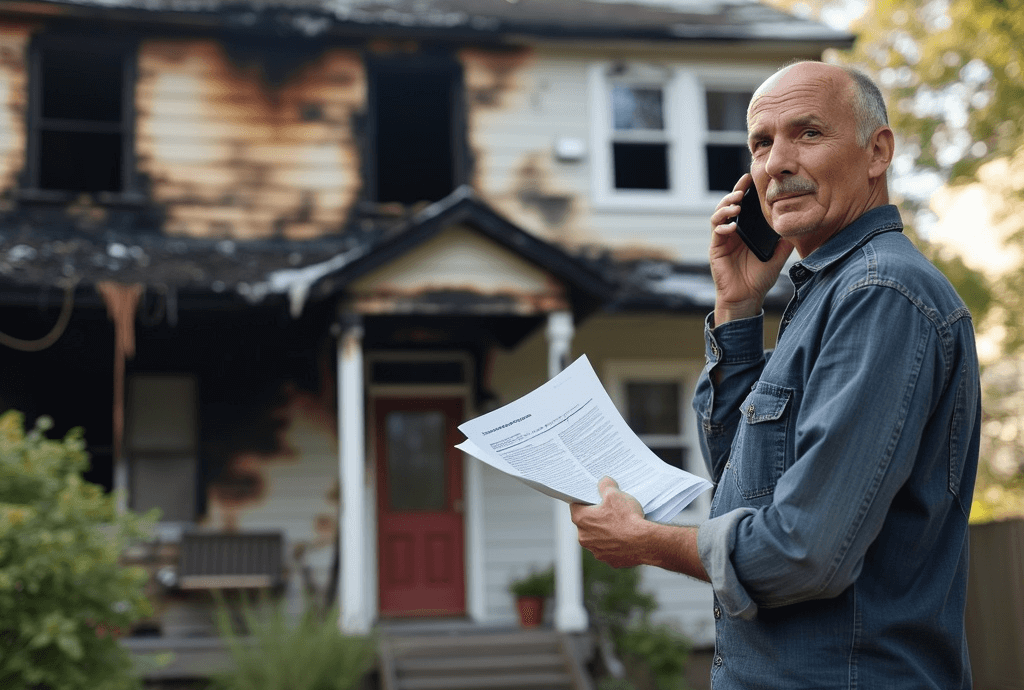Experiencing a wildfire is devastating, not only because of the immediate loss and damage but also due to the lasting environmental impacts it leaves behind. After the flames are extinguished, the environment around your property may pose new challenges that can affect your health and the rebuilding process. Understanding these environmental concerns is crucial for a safe and successful recovery. Here’s a guide to help you navigate the environmental challenges that often follow a wildfire.
Assessing Soil and Land Stability
Wildfires can significantly alter the stability of the soil. The intense heat can make the soil hydrophobic, meaning it repels water rather than absorbing it. This can lead to increased runoff, erosion, and a higher risk of landslides or mudslides, especially on slopes or hilly terrains.
To address this, consult with a soil expert or geotechnical engineer to assess the stability of your land. Implement erosion control measures such as laying down mulch, using erosion control blankets, or planting fast-growing vegetation to help stabilize the soil. These steps can prevent further degradation and prepare your land for rebuilding.
Water Quality Concerns
The aftermath of a wildfire can contaminate local water sources with ash, debris, and fire retardant chemicals. This contamination can affect both surface water and groundwater, posing risks to drinking water and aquatic life.
It’s important to have your water sources tested before use. If you rely on a well, have it inspected and the water analyzed for contaminants. Consider using bottled water or installing water purification systems until the water quality is deemed safe. Stay informed by following updates and advisories from local water authorities.
Air Quality Issues
Even after the fire is out, air quality can remain poor due to lingering smoke particles, ash, and other pollutants released during the wildfire. These can cause respiratory problems and other health issues.
To protect yourself, wear protective masks, such as N95 respirators, when returning to the affected area. Keep windows and doors closed to prevent indoor contamination. Use air purifiers with HEPA filters to improve indoor air quality. If possible, wait for official announcements that declare the air quality safe before spending extended time outdoors.
Dealing with Hazardous Materials
Wildfires can expose or create hazardous materials, including asbestos from older building materials, heavy metals, and household chemicals that have been altered or released due to high temperatures.
Avoid direct contact with any debris or ash, as it may contain toxic substances. Do not attempt to clean up hazardous materials yourself. Instead, hire certified hazardous waste removal professionals who have the expertise and equipment to handle and dispose of these materials safely. Follow local regulations for debris removal to ensure compliance and safety.
Wildlife and Ecosystem Disruption
The natural habitat disruption can cause wildlife to move into residential areas in search of food and shelter. Additionally, the loss of vegetation can affect the local ecosystem’s balance.
Be cautious of displaced wildlife and avoid interaction. Secure your property by repairing fences and keeping pets indoors. Support ecosystem recovery by participating in or donating to local reforestation efforts. Plant native species to help restore the natural habitat and prevent invasive species from taking hold.
Regulatory and Legal Considerations
Environmental regulations may impact how you proceed with cleanup and rebuilding. There may be specific guidelines for debris disposal, land restoration, and construction to prevent further environmental harm.
Obtain all necessary permits before starting any work. This may include building permits, environmental assessments, and approvals for waste disposal. Consult with local authorities or environmental agencies to ensure you’re in compliance with all regulations. Ignoring these laws can result in fines or legal action, compounding the stress of recovery.
Emotional Well-being and Community Support
The environmental aftermath of a wildfire can be overwhelming and may affect your emotional health. Dealing with the loss and the challenges of recovery can lead to stress, anxiety, or depression.
Seek support from mental health professionals if you’re struggling to cope. Connect with community groups, neighbors, and support networks who are experiencing similar challenges. Sharing resources and information can make the recovery process less isolating and more manageable.
Working with Professionals
Navigating environmental concerns requires expertise. Professionals such as environmental consultants, restoration specialists, and experienced contractors can provide valuable guidance.
Engage professionals who are familiar with post-wildfire recovery to assess your property’s specific needs. They can help develop a comprehensive plan that addresses environmental remediation, structural repairs, and preventative measures to reduce future risks.
Conclusion
Recovering from a wildfire involves addressing a complex array of environmental concerns that can impact your health, safety, and the success of your rebuilding efforts. By understanding these challenges and taking proactive steps, you can mitigate risks and promote a safer, healthier environment as you rebuild.
At Hope Street Partners, we’re committed to guiding you through every aspect of wildfire recovery. Our team of experts can help you navigate environmental concerns and rebuild safely and sustainably. Explore our services to learn how we can assist you in restoring not just your home, but the environment around you.



